History
National stereotypes were long seen as intrinsic properties of ethnic groups. Hippolyte Taine is a major representative of this positivist view. [4] In his Histoire de la littérature anglaise (1863) he held that cultural artefacts are determined by three factors: "moment", "milieu" and "race". [5] The voluntarist view of what it means to belong to a nation was expressed by Ernest Renan in his lecture "Qu'est-ce qu'une nation?" (What is a nation?) in 1882. [6] Renan argues that citizens may choose to affiliate themselves to a particular nation. Leerssen terms this view proto-imagological, because national identity was still held to be an independently existing entity. [4]
Imagology as the study of literary representations of national stereotypes emerged from the French school of comparative literature. [7] The scholars who founded the Revue de la littérature comparée in 1921 (Paul van Tieghem, Fernand Baldensperger, Paul Hazard) had an historical interest in literature and wanted to go beyond the study of national images as if they were historical facts. [7] Marius-François Guyard dedicated a whole chapter to the subject, called "L'étranger tel qu'on le voit", in his book La Litterature comparée (1951), [8] which analyses novels that represent nations other than the authors' own. As the title already suggests, Guyard did not assume that these images reflected national essences, but rather treated them as representations. This shift from essences to representations turns Guyard into a founding father of imagology, which is premised on the assumption that "the images which one studies are seen as properties of texts, as the intellectual produce of a discourse". [7] His inclusion of the subject in the study of comparative literature was contested by René Wellek, a leading figure in US comparative literature, who argued that the study of cross-national images should not become part of comparative literature, for this would turn it into an auxiliary discipline to International relations. A rift between the American and French schools of comparative literature ensued, which limited the international action radius of imagology. [9]
Method
Since imagology studies literary representations and not societies as such, it is a methodology for the humanities, not for social sciences. Following the theoretical assumption that ethnotypes are not measurable against an objective reality, the research focus is not on the truth-value of a representation but rather on its representation-value. [4] Concretely, this means that imagological research can never raise the question of whether author A has correctly represented nation B, because national character for imagologists is non-existent outside of the literary construction. Rather, imagological research inquires into the development, construction or effects of auto-images, hetero-images or meta-images an author creates in his work. A meta-image is the image an author writing from nation A about nation B attributes to the view of nation B on nation A. [11] Furthermore, it is of interest to see how ethnotypes influenced each other in comparing nationalities, time periods or genres. [11]
Imagological analysis inquires the intertextual, contextual and textual aspects of ethnotypes.
The intertext of an ethnoytpe is established through researching literary representations of the same nation in the same time period. [11] The rationale is to investigate influences of the existing body of literary representations of a nation on the case under study. This can lead to the examination of whether a literary representation of a specific nation has changed over time. For instance, ethnotypes were traditionally often portrayed in sharply contrasting binary terms. In the late-19th century, authors increasingly used ambiguity and irony in their representations, to make them more nuanced. The contextual dimension targets the historical, social, political and economic background in which the text was written, since it is assumed that the author's immediate environment influences his/her representations. [11] War between two countries, for instance, will most probably impart negative connotations to their mutual ethnotypes, while nationalism tends to reinforce the political instrumentalization of auto-images. The textual dimension of imagological analysis examines the text as such, focusing on genre conventions and rhetorical strategies. [11]
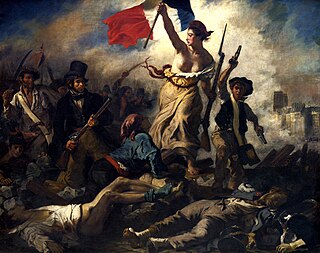
Romantic nationalism is the form of nationalism in which the state claims its political legitimacy as an organic consequence of the unity of those it governs. This includes such factors as language, race, ethnicity, culture, religion, and customs of the nation in its primal sense of those who were born within its culture. It can be applied to ethnic nationalism as well as civic nationalism. Romantic nationalism arose in reaction to dynastic or imperial hegemony, which assessed the legitimacy of the state from the top down, emanating from a monarch or other authority, which justified its existence. Such downward-radiating power might ultimately derive from a god or gods (see the divine right of kings and the Mandate of Heaven).

Comparative literature studies is an academic field dealing with the study of literature and cultural expression across linguistic, national, geographic, and disciplinary boundaries. Comparative literature "performs a role similar to that of the study of international relations but works with languages and artistic traditions, so as to understand cultures 'from the inside'". While most frequently practised with works of different languages, comparative literature may also be performed on works of the same language if the works originate from different nations or cultures in which that language is spoken.
Meta-reference is a category of self-references occurring in many media or media artifacts like published texts/documents, films, paintings, TV series, comic strips, or video games. It includes all references to, or comments on, a specific medium, medial artifact, or the media in general. These references and comments originate from a logically higher level within any given artifact, and draw attention to—or invite reflection about—media-related issues of said artifact, specific other artifacts, or to parts, or the entirety, of the medial system. It is, therefore, the recipient's awareness of an artifact's medial quality that distinguishes meta-reference from more general forms of self-reference. Thus, meta-reference triggers media-awareness within the recipient, who, in turn "becomes conscious of both the medial status of the work" as well as "the fact that media-related phenomena are at issue, rather than (hetero-)references to the world outside the media." Although certain devices, such as mise-en-abîme, may be conducive to meta-reference, they are not necessarily meta-referential themselves. However, innately meta-referential devices constitute a category of meta-references.
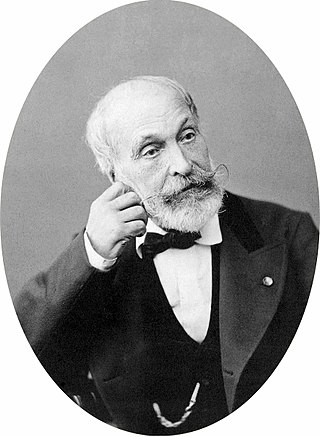
Philarète Euphemon Chasles was a widely-known French critic and man of letters.

A national personification is an anthropomorphic personification of a state or the people(s) it inhabits. It may appear in political cartoons and propaganda.

Strumpet City is a 1969 historical novel by James Plunkett set in Dublin, Ireland, around the time of the 1913 Dublin Lock-out. In 1980, it was adapted into a TV drama by Hugh Leonard for RTÉ, Ireland's national broadcaster. The novel is an epic, tracing the lives of a dozen characters as they are swept up in the tumultuous events that affected Dublin between 1907 and 1914.
The International Comparative Literature Association (ICLA) is an international organization for international research in comparative literature.
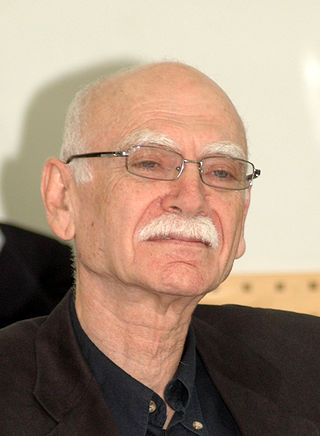
Itamar Even-Zohar is an Israeli culture researcher and professor at Tel Aviv University. Even-Zohar is a pioneer of polysystem theory and the theory of cultural repertoires.

Margit Kaffka was a Hungarian writer and poet.
Djelal Kadir is the Edwin Erle Sparks Professor of Comparative Literature at Pennsylvania State University, University Park, where he teaches literatures of the Americas, modernism, postmodernism, world literature, and classical and modern theory, and where he has been the recipient of departmental teaching awards and the College Distinguished Service Medal. He has published more than one hundred articles and is the author and editor of a dozen books on the Americas, globalization, world literature, postcolonialism, modernism and literary theory as well as editor of more than twenty special issues of literary periodicals. Kadir’s own poetry and scholarly works have been translated into Greek, Polish, Turkish, French, Arabic, and Spanish.

Joseph Theodoor "Joep" Leerssen is a Dutch comparatist and cultural historian. He is professor of European studies at the University of Amsterdam, where he also holds a Royal Netherlands Academy Research Professorship. He was awarded the Spinozapremie in 2008.
Feminist children's literature is the writing of children's literature through a feminist lens. Children's literature and women's literature have many similarities. Both often deal with being seen as weak and placed towards the bottom of a hierarchy. In this way feminist ideas are regularly found in the structure of children's literature. Feminist criticism of children's literature is therefore expected, since it is a type of feminist literature. Feminist children's literature has played a critical role for the feminist movement, especially in the past half century. In her book Feminism Is for Everybody: Passionate Politics, bell hooks states her belief that all types of media, including writing and children's books, need to promote feminist ideals. She argues "Children's literature is one of the most crucial sites for feminist education for critical consciousness precisely because beliefs and identities are still being formed". The cover of hooks' book, drawn by Laura DeSantis, depicts children alongside adults, showing the importance of the youth. The presence of feminism in children's literature has evolved over the years, but the overall message and goals have remained consistent.

Heinrich Breitinger was a Swiss literary historian and philologist.
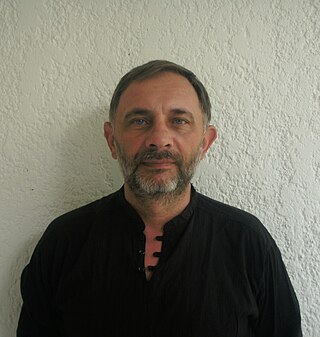
Corin Braga, is a Romanian writer and academic. He is a literary theoretician and translator.
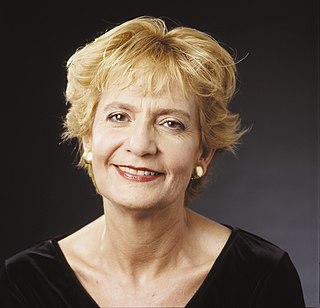
Zohar Shavit is an Israeli professor at Tel Aviv University’s School for Cultural Studies.
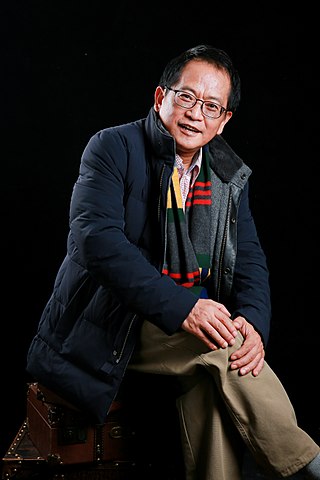
Fang Weigui is a Chinese comparative literature scholar, sinologist, and literary translator.

Ann Rigney is an Irish/Dutch cultural scholar and Professor of Comparative Literature at Utrecht University. Her research focuses on the transnational interaction between narrative and cultural memory and is authoritative in the field of Memory Studies.
Alfred Noe is an Austrian professor of Romance studies at the University of Vienna.

Pickelhering or Pickelhäring was the nickname given to the comic stock character or stage buffoon in English comedy troupes that travelled through Germany in the 17th century. The term literally meant "pickled herring".
Peter Václav Zima is a literary critic and a social scientist born in Prague 1946. He is of Czech-German origin and has dual nationality such as Austrian and Dutch. He is emeritus professor of the Alpen-Adria-Universität in Klagenfurt (Austria) where he held the chair of General and Comparative Literature from 1983 to 2012.














